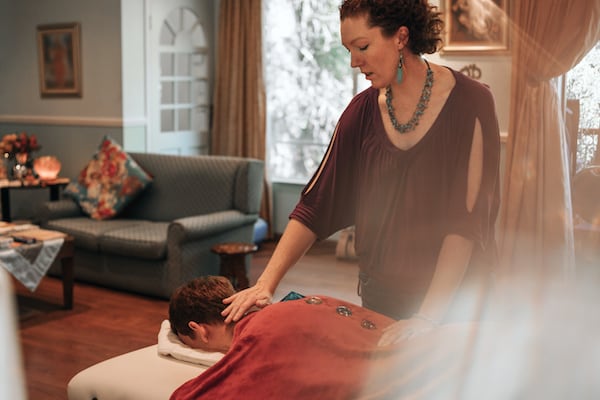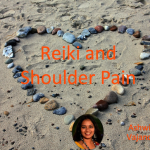We all suffer from pain at some time or another. But what is pain? And how do we deal with and manage pain from a holistic point of view instead of grabbing the first and best over-the-counter painkiller to numb the pain?
Pain is difficult to explain as an accurate description of the sensations we experiences are somewhat abstract and entirely dependent on the person experiencing the pain – every single person experiences pain differently in terms of duration and intensity. However, the reason for experiencing pain is universal – it is a warning sign from the body to the conscious mind that there is a definite problem somewhere which needs to be addressed. It is the body saying “Hey, pay attention. Something is not quite right!”
Pain is generally categorised into two principal areas, i.e., acute pain and chronic pain.
Acute pain is an immediate pain that we experience when suffering from an accident or some form of an infection. Acute pain is often called an “emergency” pain that warns you that there is a problem that needs immediate and urgent attention. Once the cause of acute pain has been addressed, the pain will usually start to subside and may eventually go away completely as healing takes place.
Chronic pain on the other hand is usually long-term and ongoing. Chronic pain is most often a symptom of an underlying health issue that needs to be addressed and signifies that we need to delve deeper into the body-mind dialogue to get to the root cause of such chronic pain. Chronic pain is thus less of a sign of the need for immediate action to address an issue within the body, and more down to a symptom that will not leave and will eventually need attention. Chronic pain often occurs for no apparent reason and it may be difficult to diagnose, so it continues and endures.
Both acute and chronic pain are experienced on a physical level but frequently pain can also be felt on a psychological level. Pain could be caused by something that affects us emotionally rather than physically such as the loss of a loved one, an argument, loss of a job/home or feelings of rejection. Psychological pain can also be caused by stress and anxiety and can go on to cause depression and other mental health issues. This may even manifest by presenting physical health issues.

Whilst pain is a highly unpleasant and often a feared experience, it also happens to be one of the body’s most vital functions, providing us with important information about our current state of health and well-being, external risk factors to our health, the need for rest or healing and even the need for seeking external support and counselling to help us improve and deal with the situation we are facing.
Through holistic pain management an alternative way of dealing with and managing pain can be pursued. Holistic pain management is about seeing and treating pain not only as a physical issue but also delving into the mental, emotional and a spiritual aspects thereof. For many people finding a way of pain management without the need for pharmacological agents has become an important health consideration. The increased production and use of pharmacological agents for the suppression and management of pain over the past decades has had the knock-on effect of creating increasing levels of chemical toxicity, a reduction in the human body’s ability to produce and release natural pain management chemicals, increased allergies to so many aspects of modern-day life as well as chemical and substance abuse and addiction.
As a holistic therapist and Reiki healer, I see many clients that suffer from pain, particularly chronic pain. Often their chronic pain is a symptom of a yet undiagnosed underlying condition. However, they do find relief in pain levels with regular Reiki treatments as we work through the body-mind dialogue that may be represented by the pain they are experiencing.
Some of the most common experiences of pain and their related body-mind dialogue are:
- Lower back pain: may relate to feelings of financial insecurity, worrying about finances, and struggling to survive.
- Pain in the shoulders: may relate to taking on too many responsibilities, many of these unnecessarily, leaving you stressed and overwhelmed.
- Abdominal pain: may relate to difficulty “digesting” life or certain aspects thereof – both past and present.
- Painful ankles: may relate to being weighed down by too much responsibility and not finding joy and enjoyment in life.
- Earache: may relate to feelings of being judged and/or judging others.
- Headache: may relate to feeling too stressed, tired, and with too much going on.
- Sciatica: may relate to feeling stuck in the past and unable to move forward with joy and optimism.
- Sore throat: may relate to not saying what you really feel or need.
The list goes on and there are many resources available that go into the details and depths of the body-mind dialogue and how this may result in the manifestation of our aches, pains, illness, and diseases. What is important is that, as a holistic therapist and Reiki healer, my expanded awareness and knowledge of what needs consideration within the ambit of holistic pain management have become an invaluable asset in my Reiki therapy. Providing clients with pain management tools over and above Reiki therapy have increased my effectiveness as a therapist, allowing for a holistic approach to them managing their pain.
Needless to say, regular Reiki treatments in itself is probably one of the most effective ways of managing and alleviating pain. Generally, it is advisable for a client who wants to support their process of pain management, to do at least one Reiki healing session per week. I have also found that including supporting healing crystals into these sessions is highly beneficial – Amethyst is my go-to as an all-purpose pain reliever. Doing Crystal Reiki healing sessions specifically aimed at pain management and pain alleviation have also proved to be highly effective and beneficial to clients.
Understanding pain, its contributing factors and how and why it manifests in the body are essential to formulate coping strategies that clients feel comfortable and confident with. And always remember, as a Reiki therapist, NEVER offer clients diagnosis of physical or mental illnesses or prescribe/provide medicine in connection with their pain, discomforts or illnesses. Support your clients in managing their pain as part of a holistic approach through your understanding, knowledge, and experience and by holding space for your clients to process and heal.
Stay tune for the next article in the series: Reiki Combined: Reiki And Intuitive Card Readings
Article by Thea van der Merwe, Ph.D.
Free eBook download: We’ve created an eBook with our best articles on this topic, and offer it for free to all our newsletter subscribers.


Thea van der Merwe, Ph.D.
Thea van der Merwe, Ph. D. is a nationally and internationally trained holistic energy, certified and experienced Master Reiki Practitioner, qualified in Usui Reiki, Reijukido, Karuna® Reiki, Karuna Ki Reiki, Crystal Reiki, and Gendai Reiki. She obtained the title of Shihan (full master/teacher), the highest level in Gendai Reiki Ho. Besides her greatest passion which is Reiki, Thea is also a spiritual shaman, healer, and teacher, offering readings as a way of accessing spiritual guidance. Her journey of personal discovery, growth, and healing started back in 2005 when she was personally in need of healing and searching for something more than what conventional medicine and therapy could provide. Thea is currently nationally and internationally registered with the South African Reiki Masters Association and The Reiki Healing Association respectively – both professional associations for the local and global Reiki communities, working to promote the wide-reaching practice and healing effects of Reiki throughout the world and where the primary philosophy is that together, we can do so much more. You can get into contact with Thea van der Merwe at viterra.co.za, which is her website, and at facebook.com/viterrahealing on Facebook.





Leave a Reply